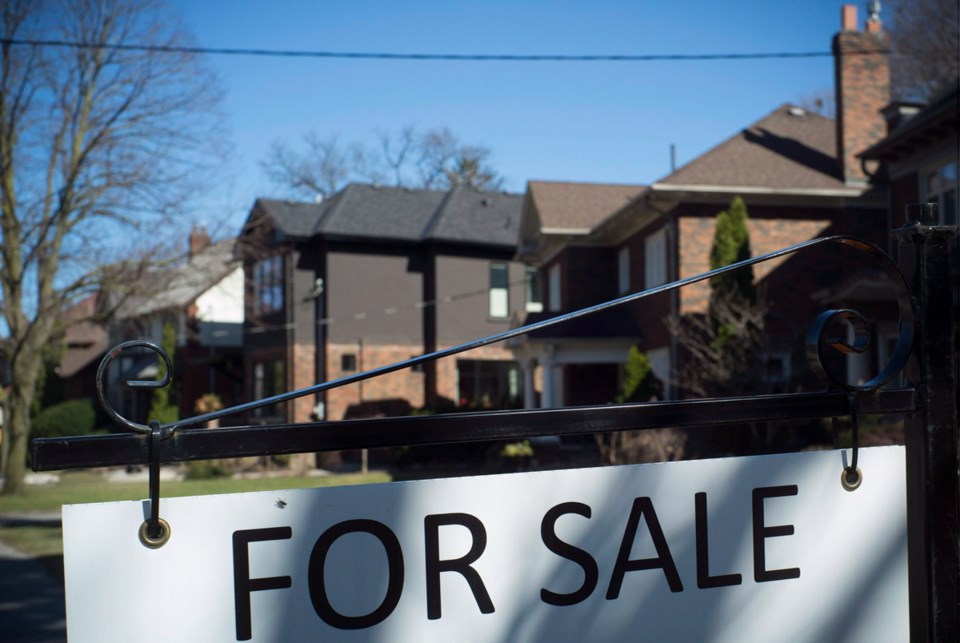National house sales fell across 70 markets in June, with Victoria among the affected regions.
Home sales across the country dropped 6.7 per cent in June from May, the largest dip in seven years, according to statistics released Monday from the Canadian Real Estate Association.
Canadian home sales were down 11.4 per cent from June 2016.
The association’s chief economist, Gregory Klump, said in a statement that the national statistics were largely affected by changes to housing policies in Ontario. But other market pressures could be felt across the board.
“The recent increase in interest rates could reinforce a lack of urgency to purchase or, alternatively, move some buyers off the sidelines before their pre-approved mortgage rate expires,” Klump said.
“In the meantime, some move-up buyers who previously purchased a home before first selling may become more motivated to reduce their asking price rather than carry two mortgages.”
Victoria’s record-breaking house sales in June 2016 declined by 13.6 per cent this June. Nonetheless, this June’s sales were still the second-highest on the books for the month, with 959 homes sold.
“Last year’s sales were outstanding. They were the anomaly,” said Ara Balabanian, president of the Victoria Real Estate Board.
“This year’s sales are still brisk, but we’re seeing a predictable move toward balancing the market.”
The slight decline from last year’s booming sales could be due in part to having fewer properties on the market. According to the VREB, there were 16 per cent fewer active listings on the market this year than last, and only a three per cent increase in new listings.
“The market still favours sellers to some degree, but it’s slowly shifting towards a balance [with buyers],” he said.
The biggest decline in June sales in the Victoria market involved single-family homes, down 18.6 per cent from last year. Condo sales rose from May to June, but still less than in 2016.
“Victoria has an extremely low supply relative to demand,” said Braden Batch, senior market analyst for the Canada Mortgage and Housing Corp.
“It’s really difficult for people to find something that will work for them and at the price point they can afford.”
Batch said markets with so few properties for sale generally experience price increases — which is what’s happened in Victoria.
According to the Multiple Listing Service (MLS) home price index, the benchmark value for a single-family home in Greater Victoria in June was $691,100 — nearly 16 per cent higher than last year.
Condos were more than 22 per cent higher, to a benchmark price of $410,900, and townhomes rose 18.5 per cent to $543,600. A benchmark price reflects a typical home in a specific area.
The most expensive homes in June, going by neighbourhoods, were in Oak Bay, East Saanich and North Saanich. The least expensive were in Sooke, Langford and the Gulf Islands.
Both Balabanian and Batch said the current home-building boom across the capital region, both for purchase and rent, likely will relieve housing pressures in Greater Victoria.
TD Bank economist Diana Petramala said that after this year’s rise, national home prices are expected to fall next year — but it’s not clear whether Victoria will be part of that trend.
“Much of that weakness will be concentrated in markets in Ontario and B.C., where households are particularly sensitive to higher mortgage rates given the stretched affordability,” Petramala wrote in a note to clients.
“Elsewhere in the country, the improving economic conditions should help offset some of the impact of gradual interest rate hikes, with home prices and sales expected to trend higher.”
The national average price for a home sold in June was $504,458, up 0.4 per cent from a year ago. Excluding Greater Vancouver and Greater Toronto, the national average price was $394,660, up 5.8 per cent.
The aggregate composite MLS home price index for June was up 15.8 per cent compared with a year ago.



